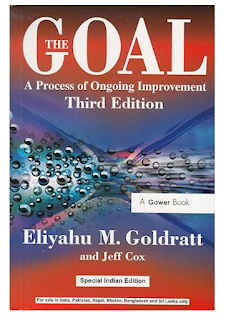Unlocking Efficiency: "The Goal" - Your Path to Business Triumph!
Operations management is basically the engine that keeps a business running smoothly. It's super important because it's all about making sure things work efficiently. Think of it as the secret sauce that helps a company save money, maintain top-notch quality, and deliver stuff on time. When operations are managed well, it means resources are used wisely, work processes flow nicely, and the company can compete better. It's like having a map that shows where things are going right and where they could be better, helping the big bosses make smart decisions. Without good operations management, even the coolest business plans might not work out as planned, holding back a company from doing its best in a fast-changing world.
"The Goal" is a management novel by Eliyahu M. Goldratt, first published in 1984. It presents business concepts through a fictional narrative, making it accessible and engaging for readers interested in operations management and business improvement.
The story follows Alex Rogo, a plant manager facing challenges in turning around an unprofitable manufacturing plant. Alex is given an ultimatum: improve the plant's performance within three months, or face closure. Desperate to save his job and the plant, Alex seeks guidance from Jonah, a mentor who introduces him to the Theory of Constraints (TOC).
TOC is a management philosophy aimed at identifying and alleviating bottlenecks (constraints) in a production system. Through various encounters and experiments, Jonah helps Alex understand the principles of TOC, emphasizing the importance of focusing on the system's constraints to improve overall productivity and profitability.
The book highlights several key concepts:
1. Identifying Constraints: The importance of recognizing constraints that limit a system's performance, whether they're in manufacturing, services, or any other industry.
2. Exploiting Constraints: Once identified, efforts should be directed toward maximizing the output of the constrained resource.
3. Subordinating Non-Constraints: Other elements in the system should be aligned and managed to support the constraints, ensuring that they operate at their maximum potential.
4. Elevating Constraints: Constantly working on elevating or removing constraints to improve the overall system's performance.
5. Continuous Improvement: The idea that improvement is an ongoing process and that the identification and handling of constraints should be a continual effort.
"The Goal" effectively introduces these management concepts through a story, making it a valuable read for professionals seeking to understand operational challenges and improve their decision-making processes within organizations. Its narrative style makes complex business ideas understandable and applicable in real-world scenarios, which has contributed to its enduring popularity in the field of management literature.


Comments
Post a Comment